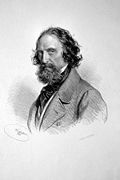Johann Friedrich Dieffenbach, Date of Birth, Place of Birth, Date of Death
TweetJohann Friedrich Dieffenbach
German surgeonAbout Johann Friedrich Dieffenbach
- Johann Friedrich Dieffenbach (1 February 1792 – 11 November 1847) was a German surgeon.
- He was born in Königsberg and died in Berlin. Dieffenbach specialized in skin transplantation and plastic surgery.
- His work in rhinoplastic and maxillofacial surgery established many modern techniques of reconstructive surgery.
- His endeavours comprehended subcutaneous operations such as tenotomy, the surgical division of a tendon.
- Before the discovery of blood typing and blood matching, Dr.
- Dieffenbach researched blood transfusion, about which he published Die Transfusion des Blutes und die Infusion der Arzneien in die Blutgefässe (1828).
- In 1839, Dieffenbach performed the first successful myotomy for the treatment of strabismus on a seven-year-old boy with esotropia.Originally, the student J.F.
- Dieffenbach studied theology at the universities at Rostock and Greifswald.
- From 1813 to 1815, he volunteered as a soldier in the Befreiungskriege (Napoleonic Wars) as a Jäger.
- From 1816 to 1820 he studied medicine at the University of Königsberg, then relocated to Bonn as an assistant to Philipp Franz von Walther.
- Following visits to Paris and Montpellier, he received his doctorate at the University of Würzburg in 1822.
- Afterwards, he settled in Berlin, where he focused his attention on plastic and reconstructive surgery.
- In 1824, he married Johanna Motherby.
- In 1832, he became an associate professor at the university of Berlin, and in 1840 became director of the Clinical Institute for Surgery at Charité Hospital.
- After his death in 1847, Bernhard von Langenbeck (1810–1887) replaced Dieffenbach as director of surgery.
Read more at Wikipedia
See Also
- Famous People's Birthdays on 01 February, Germany
- Famous People's Birthdays in February, Germany
- Famous physician's Birthdays on 01 February, Germany
- Famous physician's Birthdays in February, Germany
- Famous surgeon's Birthdays on 01 February, Germany
- Famous surgeon's Birthdays in February, Germany
- Famous university teacher's Birthdays on 01 February, Germany
- Famous university teacher's Birthdays in February, Germany


 Date of Birth:
Date of Birth:  Place of Birth: Königsberg
Place of Birth: Königsberg
